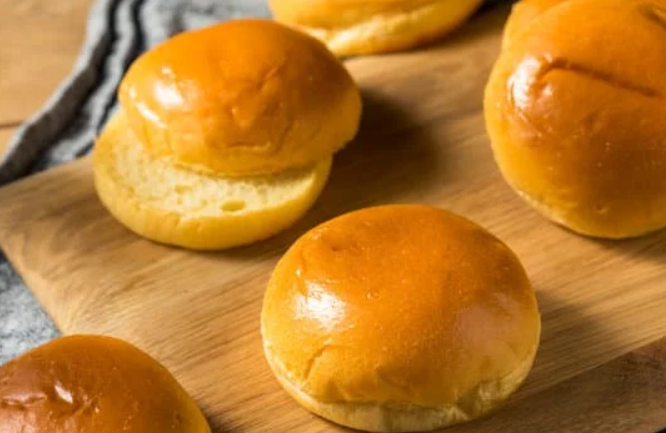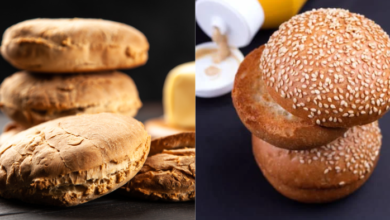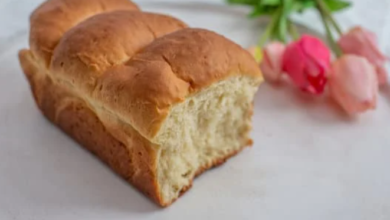What Gives Brioche Its Distinctive Yellow Color?

What To Know
- Saffron, a spice derived from the stigmas of the saffron crocus flower, is often used to intensify the yellow color of brioche.
- To achieve a vibrant yellow brioche, it is essential to use a combination of high-quality ingredients and follow the proper techniques.
- The baking temperature and dough mixing technique also play a role in determining the intensity and uniformity of the yellow color.
Brioche, a fluffy and buttery bread, is renowned for its vibrant yellow hue. This distinctive color is not merely a cosmetic feature but rather a result of a carefully crafted combination of ingredients and techniques. In this comprehensive guide, we will delve into the science behind what makes brioche yellow, exploring the role of each component and the processes involved.
The Role of Eggs
Eggs are the primary contributor to the yellow color of brioche. The yolks contain a pigment called lutein, a carotenoid that gives egg yolks their characteristic golden hue. When eggs are added to the brioche dough, they release this pigment, which imparts its color to the bread.
The Influence of Milk
Milk is another essential ingredient that contributes to the yellow color of brioche. Milk contains riboflavin, a water-soluble vitamin that has a yellowish color. When milk is added to the dough, it dissolves and interacts with the other ingredients, contributing to the overall yellow hue.
The Magic of Butter
Butter is renowned for its rich, golden color, which it owes to the presence of carotenoids. Carotenoids are pigments that give butter its characteristic yellow hue. When butter is incorporated into the brioche dough, it releases these pigments, further enhancing the bread’s yellow color.
The Role of Saffron
Saffron, a spice derived from the stigmas of the saffron crocus flower, is often used to intensify the yellow color of brioche. Saffron contains a compound called crocin, which is a potent yellow pigment. When saffron is added to the dough, it releases crocin, resulting in a more vibrant yellow color.
The Impact of Flour
The type of flour used in the brioche dough can also influence its color. Bread flour, which has a higher protein content, tends to produce a whiter brioche. Pastry flour, on the other hand, has a lower protein content and produces a more yellow brioche.
The Importance of Baking Temperature
The baking temperature also plays a crucial role in the color of brioche. Baking at a higher temperature can cause the Maillard reaction to occur more rapidly, resulting in a golden brown crust. This reaction involves the interaction of amino acids and sugars, producing a range of brown pigments.
The Influence of Dough Mixing
The way the dough is mixed can also affect the color of brioche. Overmixing the dough can result in a paler brioche, as the gluten strands become too tight and prevent the pigments from being evenly distributed. Gentle mixing ensures that the pigments are dispersed throughout the dough, resulting in a more uniform yellow color.
The Secrets of a Golden Brioche
To achieve a vibrant yellow brioche, it is essential to use a combination of high-quality ingredients and follow the proper techniques. Here are some tips for baking a golden brioche:
- Use fresh, high-quality eggs with bright yellow yolks.
- Incorporate whole milk into the dough for a richer color.
- Use unsalted butter to control the salt content and enhance the natural color of the butter.
- Consider adding a pinch of saffron to intensify the yellow hue.
- Use bread flour or pastry flour, depending on the desired level of yellowness.
- Bake the brioche at a moderate temperature to prevent burning and promote even browning.
- Avoid overmixing the dough to ensure proper pigment distribution.
The Science of Color in Brioche
The yellow color of brioche is a result of a complex interaction between various factors. The pigments present in eggs, milk, butter, and saffron contribute to the overall hue. The baking temperature and dough mixing technique also play a role in determining the intensity and uniformity of the yellow color.
Beyond the Yellow: Other Factors Influencing Brioche Color
While the yellow color is a signature characteristic of brioche, other factors can influence its appearance. The addition of chocolate or fruit can alter the color, creating variations such as chocolate brioche or fruit-filled brioche. The shape of the brioche can also affect its color, as different shapes bake differently and produce varying degrees of browning.
Key Points: A Symphony of Flavors and Colors
Brioche is a versatile bread that can be enjoyed in various forms, each with its unique flavor and color. By understanding the science behind what makes brioche yellow, bakers can create golden loaves that delight the senses. Whether it’s a classic yellow brioche or a more colorful variation, the possibilities are endless.
Frequently Discussed Topics
Q: Why is my brioche not yellow?
A: Ensure you are using high-quality ingredients, especially eggs with bright yellow yolks. Consider adding a pinch of saffron to intensify the color.
Q: How can I make my brioche more yellow?
A: Use pastry flour instead of bread flour, as it has a lower protein content and produces a more yellow brioche. Consider adding a small amount of turmeric powder to the dough for an additional boost of color.
Q: What other factors can affect the color of brioche?
A: The baking temperature, dough mixing technique, and the addition of other ingredients such as chocolate or fruit can all influence the color of brioche.




